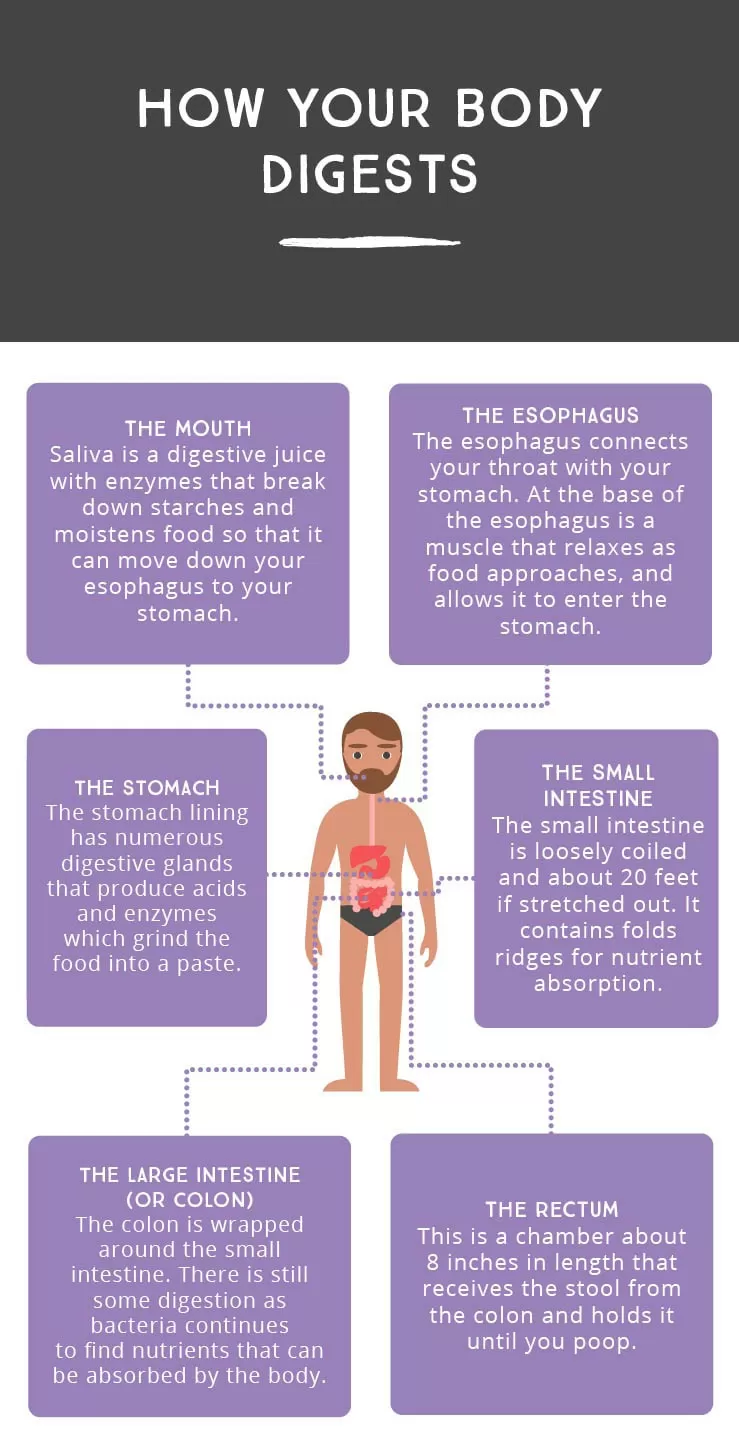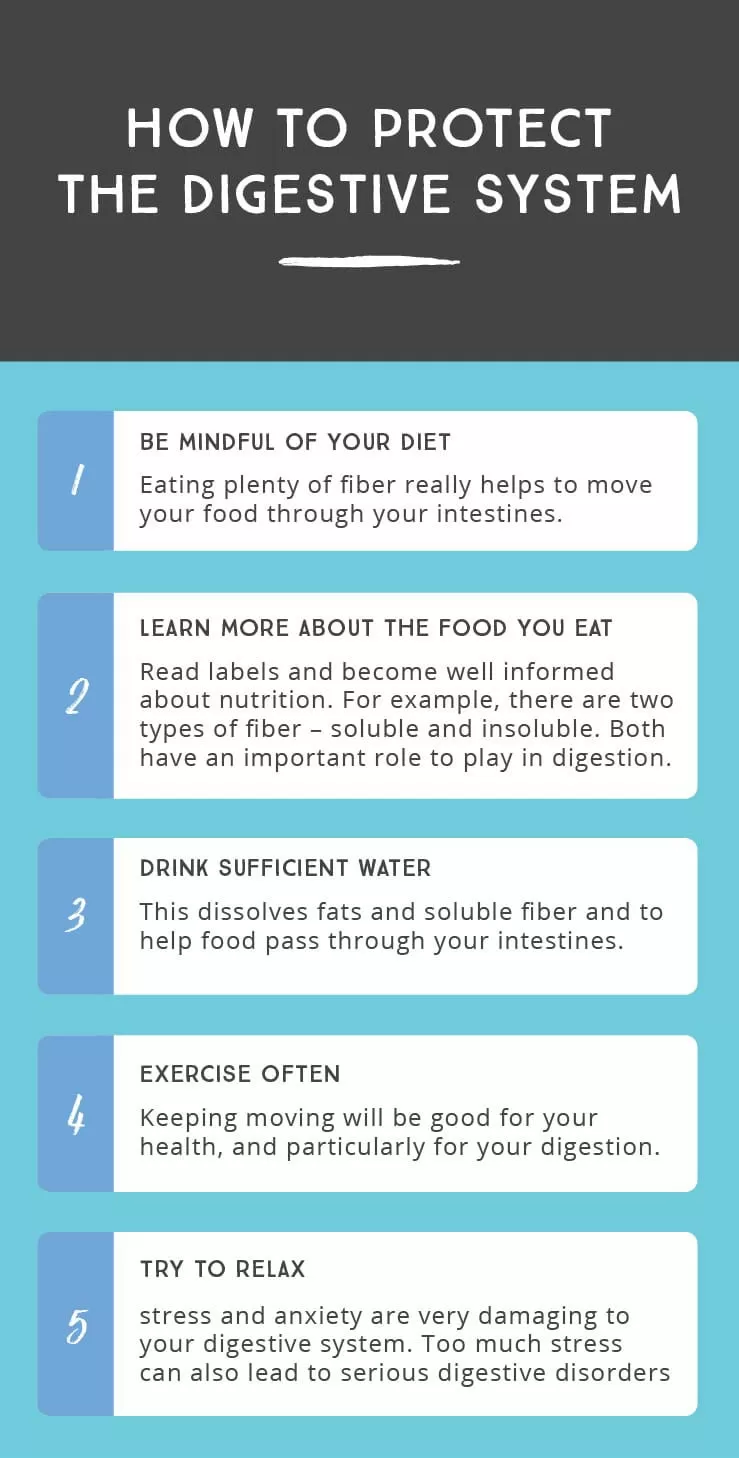How the Digestive System Works In Schaumburg IL

Keeping your digestive system healthy is imperative for your well-being In Schaumburg IL
Your digestive system includes the gastrointestinal (GI) tract as well as the liver, pancreas, and gallbladder. When you eat, food first enters your mouth, before passing down the esophagus into the stomach. From here, it travels through the large and small intestines, before reaching the rectum/anus. Schaumburg IL chiropractors know that at every different stage, various enzymes, gut flora, bacteria, the blood supply, and hormones are assisting in the complex digestion process.
The Importance of Digestion in Schaumburg IL
The food you eat is your source of nutrients. It's used to give you energy, and to repair and grow your body. You can't access these nutrients unless your food is broken down into smaller molecules, which is when they can be absorbed. What makes things more complicated for your body is that you probably eat many different types of food - and usually combine these at the same time. At any meal, you could be eating carbohydrates, proteins, and fat and your body requires different methods to change each into a usable form.
To understand how the digestive system works, it would be helpful to follow the progress of food through the GI tract and to see how each digestive organ contributes to breaking down the food particles.
The Mouth
Your digestive process begins as you chew food in your mouth. Saliva is a digestive juice with enzymes and is particularly good at breaking down starches. Most people produce about 2 pints of saliva a day, which is an enormous amount. Its function is also to moisturize food so that it can move easily down your esophagus to your stomach. The work of the teeth is to break up the food, while the tongue helps to mix it with saliva until it's suitable for swallowing.
The Esophagus
Once you've swallowed your food it needs to travel down the esophagus to reach the stomach. The esophagus is the tube that connects your throat with your stomach. This movement of food is an involuntary action and is controlled by your brain. It creates synchronized waves that propel the food towards the stomach (known as peristalsis). At the base of the esophagus is a ring-like muscle that relaxes as food approaches and allows it to enter the stomach.
The Stomach
In many ways, your stomach acts as a storage tank to hold the food you've eaten until it's sufficiently digested to continue its journey through the GI tract. The stomach has incredibly powerful muscles, as food enters, it immediately begins to churn, breaking the food into smaller parts. The stomach lining has numerous digestive glands that produce acids (such as hydrochloric acid) and enzymes which grind the food into a paste - known as chyme. The acid is also able to destroy harmful bacteria.
Once the food is in a semi-fluid state, it's passed from the stomach into the small intestine. There's a valve at the bottom of the stomach, known as the pylorus, that controls the movement of the paste-like chyme, and prevents food from being regurgitated back into the stomach.
The Small Intestine
The small intestine is made up of three parts - the duodenum, the jejunum, and the ileum. In the duodenum, food is digested further - largely with the help of bile from the liver and pancreatic digestive juices. In the jejunum, food is broken down into even smaller molecules, while the ileum is largely responsible for the absorption of nutrients that takes place through the ileum wall into the bloodstream. While the stomach is acidic, the small intestine neutralizes these acids into an alkaline environment.
The small intestine is loosely coiled but is about 20 feet long if stretched out. It contains many folds and ridges for optimal nutrient absorption. These protrusions are called villi and are covered in microvilli, which are hair-like structures. The villi contains enzymes that assist in breaking the food particles into nutrients. They are essential in that they also prevent leaky gut.
By the time your food reaches the end of the ileum - again moved along by peristalsis - it is largely a combination of water and electrolytes (such as sodium and chloride). It also contains the waste products from the food and your body - such as dead cells and bacteria that need to be eliminated. When food leaves the small intestine, about 90% of the nutrients have been extracted and absorbed.
The Large Intestine (or Colon)
The colon is about 5 - 6 feet in length and is wrapped around the lower part of the small intestine. In this area there is still some digestion as bacteria continue to find nutrients, vitamins, and minerals that can be absorbed by the body. The 'good' bacteria also keep protecting your body against harmful bacteria.
Most of what enters the colon is waste matter in liquid form. It is here that much of the water is re-absorbed, which changes the waste into a soft, solid form known as a stool (better known as poop). The colon separates the waste into small segments and pushes it into the lower colon. The lower colon stores this stool until it is moved to the rectum for elimination as poop. It normally takes about 36 hours for a stool to work its way through the colon. You have a bowel movement when the rectal walls are stretched, and the anus muscles relax.
The Rectum
This is a chamber about 8 inches in length that receives the stool from the colon and holds it until you poop. It has sensors that sends a message to the brain, which then decides whether to release the sphincter muscles, contract the rectum, and expel the poop.

Important Organs Involved in Digestion
While the glands in the stomach lining produce acids to break down food, and the small intestine has its own digestive juices, the pancreas and liver also play a vital part in the digestive process.
The Pancreas
The pancreas is connected to both the liver and the gallbladder. It secretes enzymes, through ducts, into the small intestine that then completes the chemical digestion of proteins, carbohydrates, and fats. The breakdown of carbohydrates helps to create energy, while proteins are broken down into amino acids, which are used as building blocks for the body. An essential function of the pancreas is insulin creation. This hormone regulates the amount of sugar in the blood. Without the enzymes and hormones from the pancreas, the digestive system wouldn't be effective.
The Liver and the Gallbladder
The liver produces bile, which helps you digest fats. The bile is stored in the gallbladder until it's needed, at which time it's squeezed into the small intestine through the bile duct. The bile mixes with the fat and dissolves it into a watery state so that the enzymes from the pancreas can digest the fat molecules and break these down into fatty acids.
Another vital function of the liver is that it cleanses and purifies the blood that comes from the small intestine containing nutrients. This important detoxification process also allows the liver to store amino acids, metabolize fats and cholesterol, and store glucose. The liver is the second largest organ in the body and its role in the body is so important that maintaining a healthy liver is crucial.
The Spleen
The spleen is not part of the digestive system but is connected to the blood vessels of both the stomach and pancreas. Its major task is removing or storing blood cells. However, Chinese medicine believes that the spleen and stomach work together and that's its an essential part of the process. It is said to store the energy of food.
What controls the digestive process?
This highly complex and streamlined process is controlled by hormones and nerve regulators. The digestive process starts the moment you put food in your mouth as the many organs of the GI tract kick into high gear. Actually, some will say that the process begins even before this - in the brain. The hypothalamus is what stimulates appetite. When you eat, it's the brain that controls many of the functions that are often taken for granted. You eat and then you sit back, and your brain directs your body to take care of the rest.
The cells that line the stomach and the small intestine produce and release hormones. These hormones then stimulate the production of digestive juices that contain enzymes. The enzymes, in turn, set off chemical reactions that break down your food into nutrients that can be absorbed.
Nerve regulators also control the digestive system. Nerves connect the digestive organs to the brain and also release chemicals that cause the muscle layer of the GI tract to relax and contract. The process of peristalsis - moving the food down the GI tract - is controlled in this way, as is the elimination of waste. These nerves are usually stimulated when food stretches the walls of the digestive organs, signaling that food has arrived and needs to be digested.
How to protect the digestive system
You will see that this system is complex and delicate. It's uniquely designed to ensure that the food you eat is converted into nutrients that you can then use for energy, growth, and cell repair - in other words, for the essentials of life!
Mindful of the importance of your digestive system in helping you stay healthy, here are a few tips that will help protect your gut:
- Be mindful of your diet - eating plenty of fiber really helps to move your food through your intestines.
- Learn more about the food you eat - read labels and become well informed about nutrition. For example, there are two types of fiber - soluble and insoluble. Both have an important role to play in digestion.
- Drink sufficient water to dissolve fats and soluble fiber and to help food pass through your intestines.
- Exercise often - keeping moving will be good for your health, and particularly for your digestion
- Try to relax - stress and anxiety are very damaging to your digestive system. If you're very worried about something, have you noticed the effect this has on your stomach? Too much stress can also lead to serious digestive disorders.
It's no secret that obesity is becoming an epidemic in the US, and in other parts of the world too. This is because most people are eating a poor diet that consists largely of sugar and refined carbohydrates. Much of this food is nutritionally poor, and plays havoc with the digestive system.
Leaky gut is becoming more of a phenomenon than ever. This occurs when the gut lining is damaged, with gluten often being the culprit. When this happens - usually through poor diet, infections, or overuse of medications - all those toxins that should be eliminated from your body, leak through the small intestine. You can imagine the effect this has on your overall health and well-being!
What's little known is that a huge part of your immune system is actually in your GI tract. Science is still trying to formulate the relationship between the immune system and the bacteria in the gut but it's clear that the American diet and lifestyle are linked to a growing number of digestive diseases. What you eat and your lifestyle have a profound impact on your overall health. If you can maintain a good balance between your digestive organs and enable your body to receive the basic nutrients it needs, you will have laid the foundation for good health.
If you're ready to get help with your health, contact us at the BrightLife Schaumburg today to schedule an appointment.

OFFICE HOURS
Monday
9:00am - 6:00pm
Tuesday
9:00am - 6:00pm
Wednesday
9:00am - 7:00pm
Thursday
9:00am - 6:00pm
Friday
9:00am - 12:00pm
Saturday
9:00am - 12:00pm
Sunday
Closed
BrightLife Schaumburg
44 W Schaumburg Rd
Schaumburg, IL 60194




